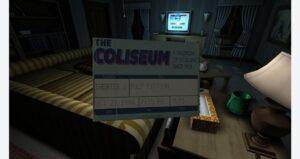Gone Home is a first-person exploration game developed by The Fullbright Company, available on platforms including Linux, Windows, OS X, PlayStation 4, Xbox One, Nintendo Switch, and iOS. The narrative centers around a young woman who, returning from abroad, finds her family home deserted. It is her task to unravel the mystery of her family’s disappearance.

Gone Home relies on a semi-structured format where players are given wide freedom to explore, there is no sense of a time restriction or any explicit instructions regarding what to do. Moreover, players take the perspective of Katie, who has no knowledge of what has happened, and is taking in the environment as someone given no context from the get-go. Yet, the game embeds a sense of structure through its main mechanics and the main architecture of the setting. The primary gameplay loop involves mechanics of walking, examining, and interacting with items, which enables players to explore at their own pace and engage with the game’s aesthetic elements that are reminiscent of those of horror games. Altogether, these elements convey the coming-of-age story of a queer teenager and her parents, who are experiencing their own types of personal horrors.

Most of the gameplay in Gone Home relies on the same loop of walking around to examining and interacting with items. As players interact with items in the Greenbriar house, they gain information regarding the main narrative of the game and side arcs as well as guidance as to what do next. For instance, a letter found by Katie in the house addressed to her reads “Please, whatever you’ve found, don’t tell Mom and dad. The attic.” Though clues like these, the game gives embedded hints to the player on what they should be doing next. Thus, overall, the game follows a fairly unstructured format while also having the ability to follow a pre-structured and embedded narrative format left for discovery. This pre-structured narrative when it comes to Gone Home involves several arcs. The main arc follows Katie and is experienced by the player and their traversal of the Greenbriar house as Katie returns from abroad to an empty house. From there, we observe Sam’s arc, regarding Katie’s sister who struggles with her sexual orientation and escapes from home to be with the girl she loves Lonnie. Additionally, we see other arcs that focus on Janice (Katie’s mother), Terry (Katie’s dad), their marital relationship, and Oscar Masan (Katie’s granduncle) who is deemed a psycho and is said to haunt the Greenbriar house. Thus, the simple mechanics of walking around and examining/interacting with items actually allows for rich involvement into the multiple stories in Gone Home, where each item a player discovers becomes a driver for storytelling and remnants of the stories they lived. Moreover, the game developers paid special attention to instill just the right amount of information into every single item and clue, allowing for a sustained sense of mystery and curiosity in the game. Interacting with a single item, leaves you confused, yet collectively the items have the power of conveying the intricacies of the Greenbriar family’s story.
“Gone Home” is also a prime example of environmental storytelling, where the setting itself tells a story. The stormy night, flickering lights, and the creaks of an old house contribute to an atmosphere filled with tension and suspense, enhancing the emotional impact of the narrative discoveries. Upon exploring the game, I felt jumpy and like I was being hunted — a potential game design choice that emphasizes the arc where the Greenbriar house is said to be haunted. Moreover, this setting fuels the sense of mystery and intrigue and gets the player imagining all possible dreadful scenarios that could’ve happened. Furthermore, the design of the house—with its hidden passages and locked doors—mirrors the secrets of the Greenbriar family, each room offering a new piece of the puzzle. The Greenbriar house itself, thus, filled with remnants from its inhabitants, becomes a tangible representation of the family’s story and conveys the gloomy mood of the current family situation.



